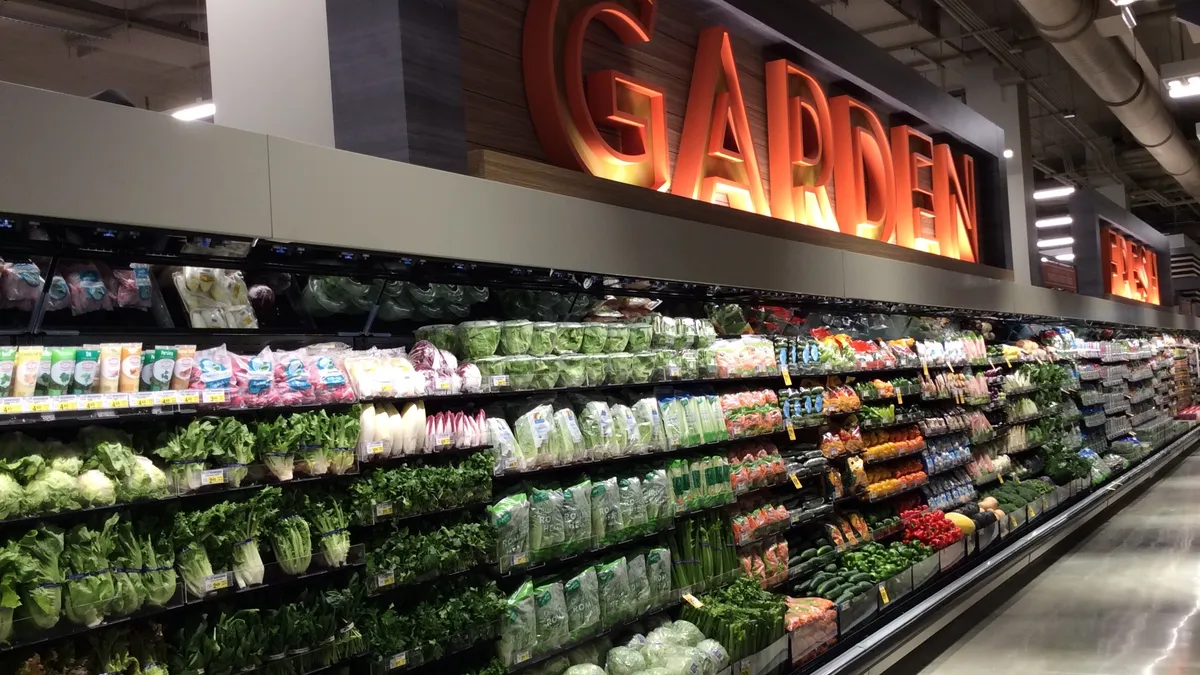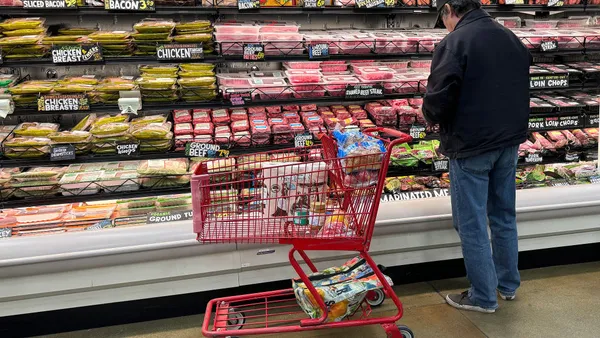Dive Brief:
- Grocery sales rose slightly in July, posting an increase of 0.4% over the level recorded the previous month, according to estimated data released Friday by the U.S. Census Bureau. Overall sales for the retail sector were up 1.2% in July compared with June.
- Spending on groceries continued at an elevated pace in July compared with the same month in 2019. Industry sales were up 10.6% on a year-over-year basis during the month, reflecting the heavy reliance shoppers have been placing on grocery stores as the pandemic continues to hobble the economy.
- Frozen foods have been an especially strong source of sales for the grocery industry during the pandemic, and that continued as July gave way to August. Sales for the category were up 17.8% during the week that ended August 2, the 21st week since the public health crisis began in the United States that year-over-year spending on frozen foods was up by double digits, according to statistics distributed by 210 Analytics and IRI.
Dive Insight:
The latest sales figures from the government suggest that while U.S. consumers continue to depend more heavily on grocery stores than they did before the COVID-19 crisis swept the country, they’ve settled into less frenzied shopping behavior after initially dashing to supermarkets to stock up.
That initial surge resulted in grocery sales that were up almost 30% year-over-year in March even as overall retail sales took an 8.7% nosedive. By June, as more retail options opened up, the enormous sales growth seen by grocers had given way to a 1.6% decline while overall retail sales bulked up by 7.5%.
In another sign that the grocery market has stabilized, people are beginning to ease up on what they buy during trips to the store. Although average basket sizes remain bigger than they were in 2019, the rate of increase was down to its lowest level since the last week of June, according to a report from 210 Analytics.
One reason for the decline in basket sizes could be that people are becoming more confident that they’ll be able to find what they want when they visit the store. Eighteen percent of the consumers who participated in a poll conducted by the Food Industry Association (FMI) in mid-July reported that a large number of products were out of stock in stores, compared with 46% in late March.
Food retailers have done a good job demonstrating to U.S. consumers that they have mastered the art of providing safe and reasonably reliable access to groceries during an uncertain time, a poll conducted by Harris suggests.
Amazon, Publix, Wegmans, Costco and Kroger grabbed half of the top 10 spots in the 2020 Axios Harris Poll 100, a ranking of the U.S. companies reputations based on responses from more than 34,000 people that was released at the end of July. Kroger and Publix finished at the top of the list when companies were ranked in terms of their response to the pandemic.
Looking ahead, grocery stores could be poised for continued strength owing to the large number of people who remain stuck at home — and therefore more likely to head to their own refrigerators and pantries for food than they would otherwise be. Another factor that could impact sales is that many schools are depending on virtual instruction, meaning children can be expected to eat more meals at home than they would in an ordinary year, according to 210 Analytics’ report.










